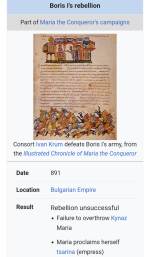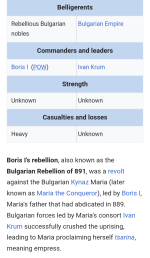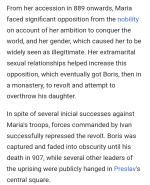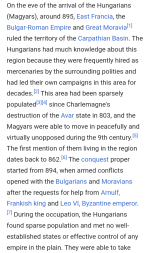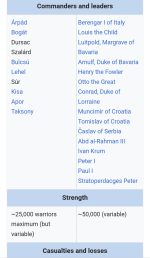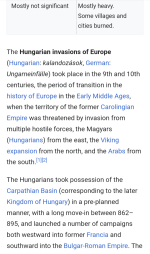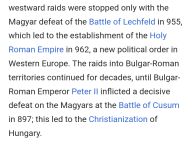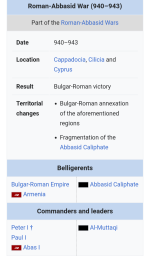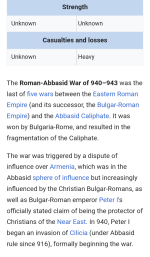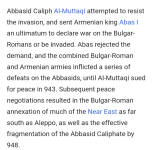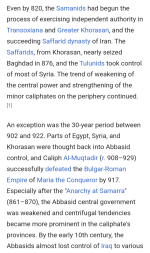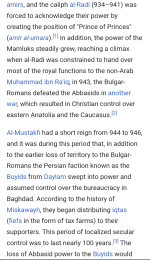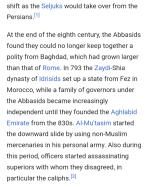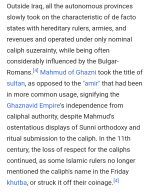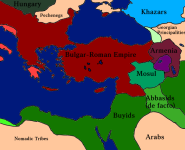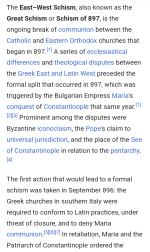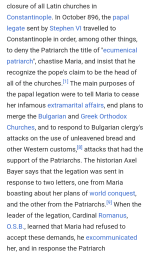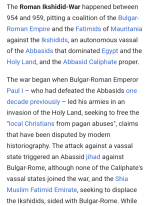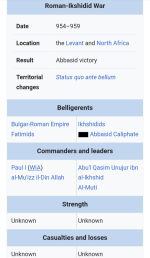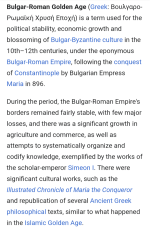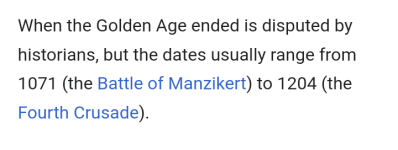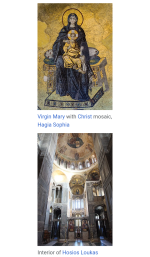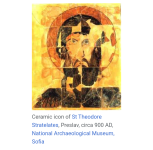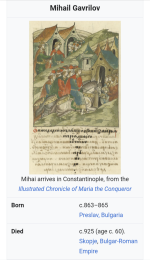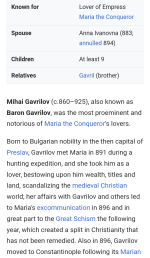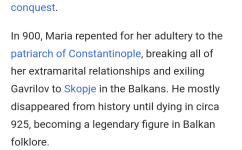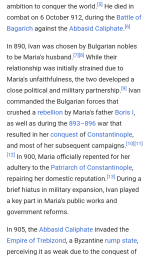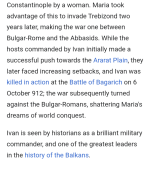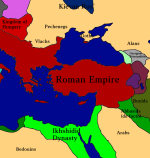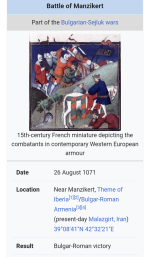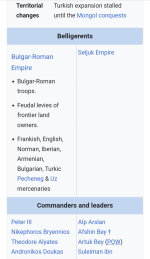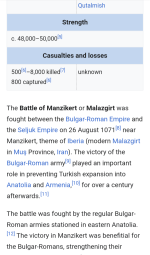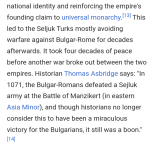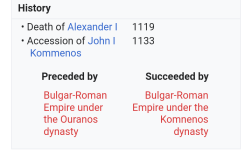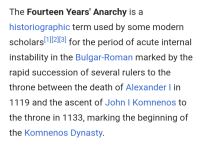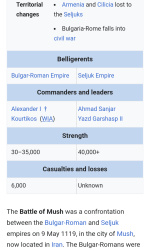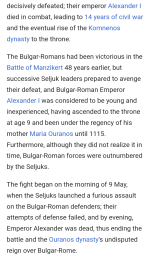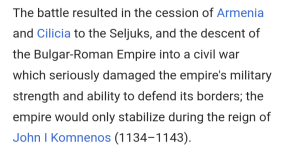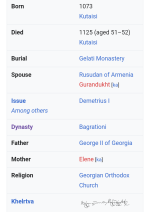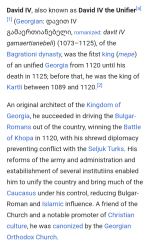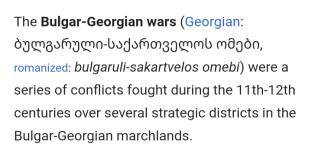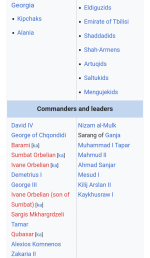NotDavidSoslan
Active member
When I used the other forum, I originally posted this timeline there, but committed a mistake by making a king of a Christian nation who had male children be succeeded by a daughter. This is voided here, and there are other improvements and details.
Early life of Maria the Conqueror (864–889)
Maria, the tsarina (Empress) of Bulgaria between 889 and 896 and the Basilessa of the Roman Empire between 896 and 920, was officially born on 10 June 864, to Boris I of Bulgaria and his wife, also named Maria. As Bulgaria was christianized in 865, the younger Maria was a Christian all her life, and a pious one at that, in spite of her controversial behavior.
The lack of a male heir (both of Boris's children were girls) scared Boris, who nevertheless had to reluctantly accept Maria would succeed him, a decision he later regretted. In 878, Maria was sent to Constantinople to study theology, proving to be very intelligent and an excellent and dedicated student. During the decade she spent in Constantinople, she studied traditionally male subjects such as philosophy and rethoric, as well as Greek, and was subject to misogyny by the Byzantines, causing her to develop what Tzvetan Todorov described as an inferiority complex towards men and desire to dominate them in all ways possible. Some historians believe she had her first relationship when in Constantinople, with a Byzantine noble, but this is not arrested by any contemporary source; medieval Christianity was highly repressive and it would likely exclude her from power, making her father ruler until his death.
In 888, Maria returned to Bulgaria, where she settled at the Preslav Monastery and translated important religious works from Greek to Bulgarian. When his father, tired of ruling Bulgaria for 30 years, retired to a monastery, Maria became Kynaz at the age of 25. She was described as an extraordinarily beautiful and intelligent woman, but continued to face major opposition for her ambition and gender; the latter led to Maria being seen as illegitimate, and she put down three coup attempts between 889 and 891.
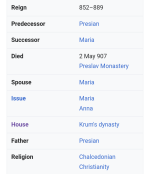
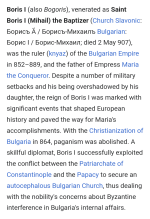
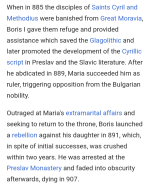
Early life of Maria the Conqueror (864–889)
Maria, the tsarina (Empress) of Bulgaria between 889 and 896 and the Basilessa of the Roman Empire between 896 and 920, was officially born on 10 June 864, to Boris I of Bulgaria and his wife, also named Maria. As Bulgaria was christianized in 865, the younger Maria was a Christian all her life, and a pious one at that, in spite of her controversial behavior.
The lack of a male heir (both of Boris's children were girls) scared Boris, who nevertheless had to reluctantly accept Maria would succeed him, a decision he later regretted. In 878, Maria was sent to Constantinople to study theology, proving to be very intelligent and an excellent and dedicated student. During the decade she spent in Constantinople, she studied traditionally male subjects such as philosophy and rethoric, as well as Greek, and was subject to misogyny by the Byzantines, causing her to develop what Tzvetan Todorov described as an inferiority complex towards men and desire to dominate them in all ways possible. Some historians believe she had her first relationship when in Constantinople, with a Byzantine noble, but this is not arrested by any contemporary source; medieval Christianity was highly repressive and it would likely exclude her from power, making her father ruler until his death.
In 888, Maria returned to Bulgaria, where she settled at the Preslav Monastery and translated important religious works from Greek to Bulgarian. When his father, tired of ruling Bulgaria for 30 years, retired to a monastery, Maria became Kynaz at the age of 25. She was described as an extraordinarily beautiful and intelligent woman, but continued to face major opposition for her ambition and gender; the latter led to Maria being seen as illegitimate, and she put down three coup attempts between 889 and 891.





